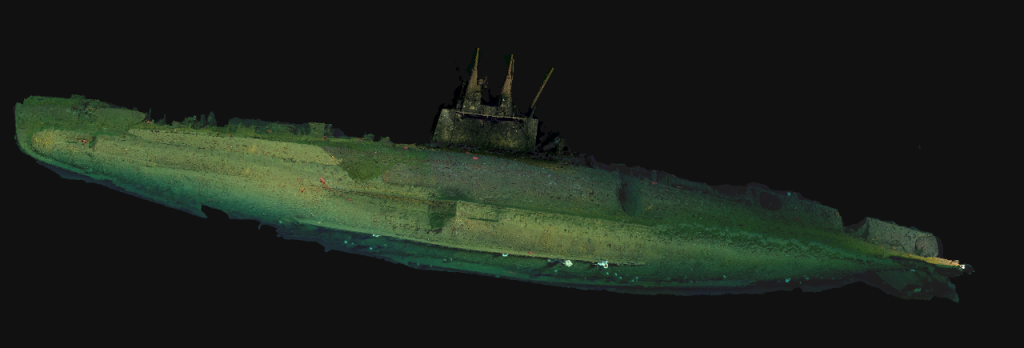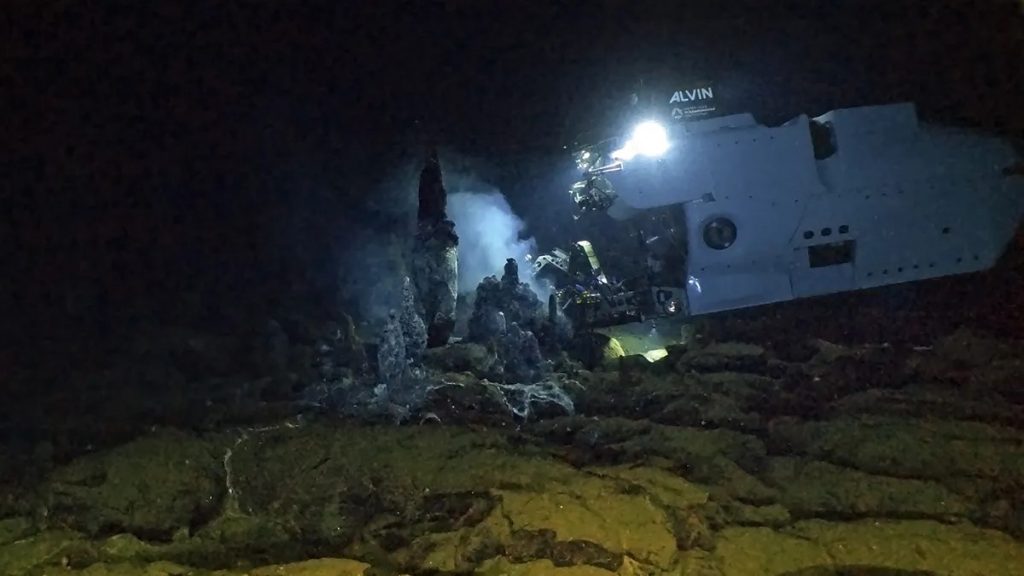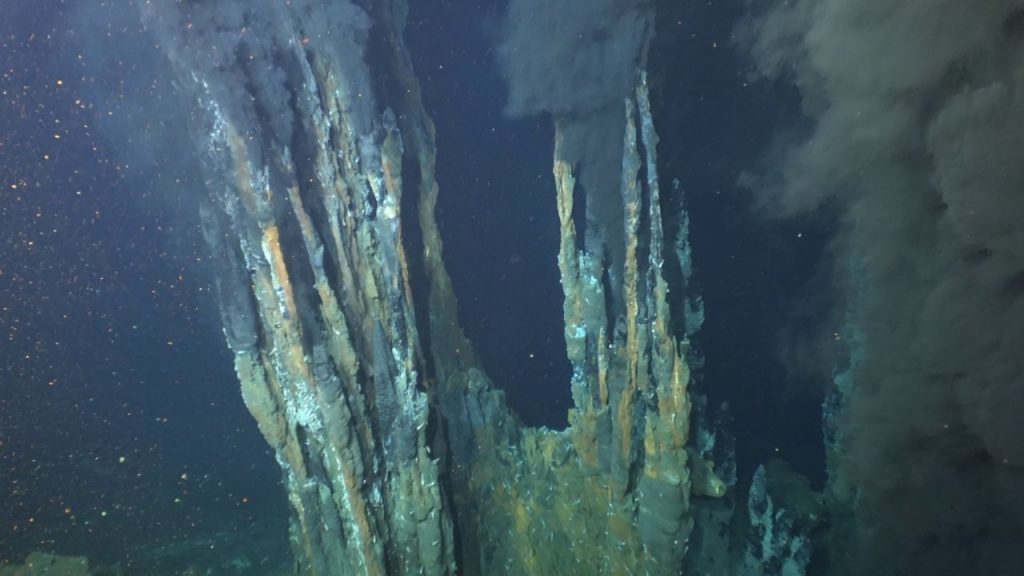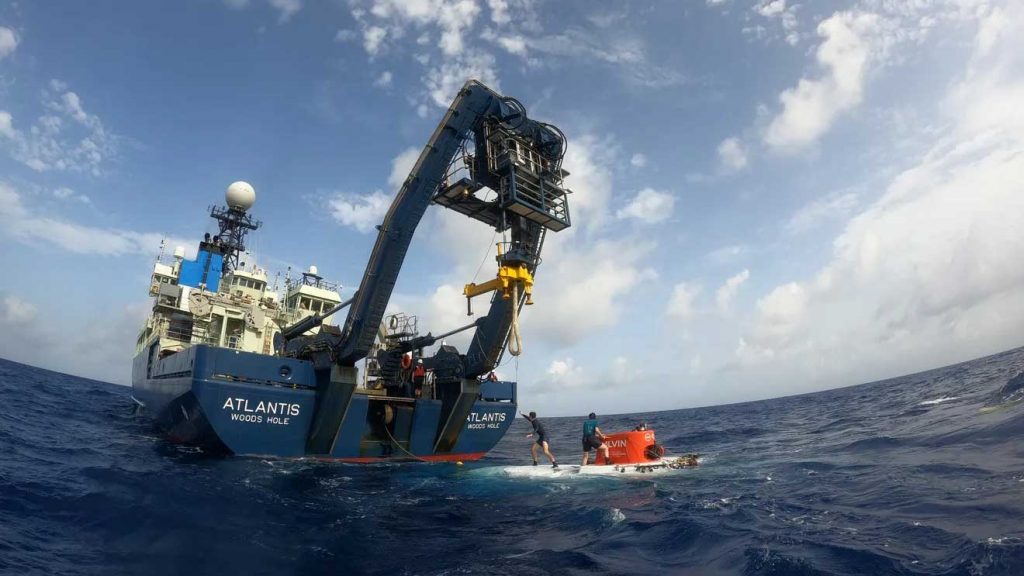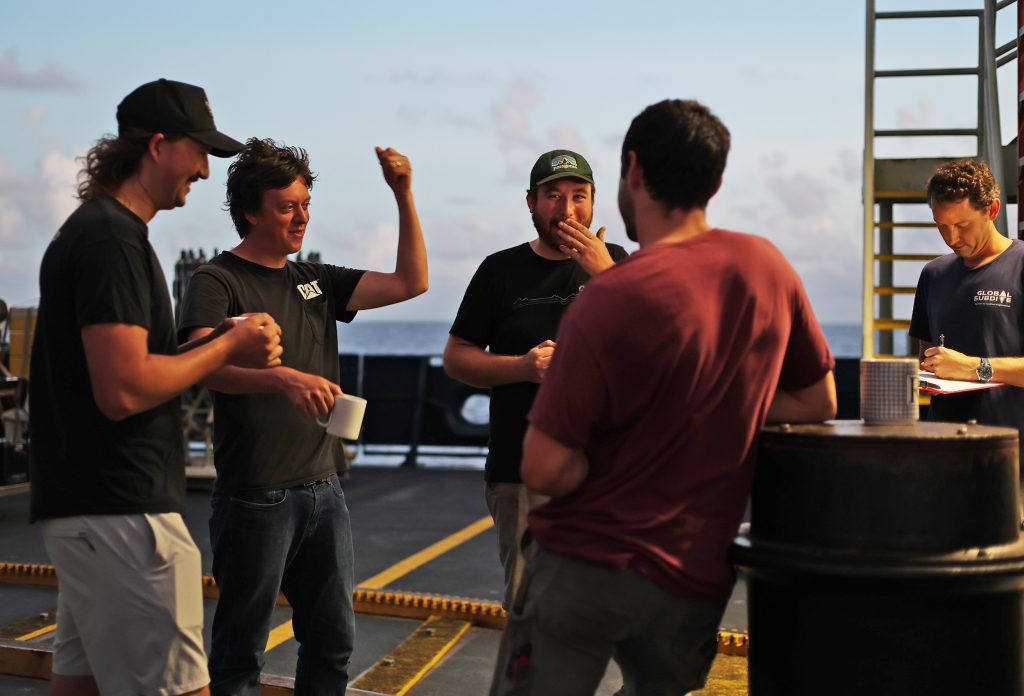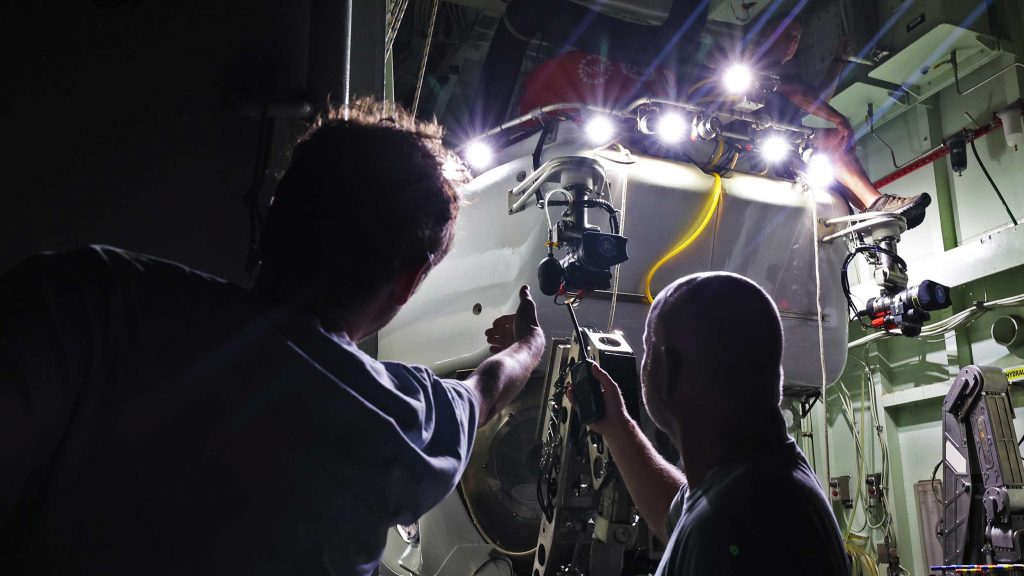Alvin 6500
Alvin discovers volcanic eruption in East Pacific Rise
Dr. Andrew Wozniak (University of Delaware) led an Alvin cruise to the East Pacific Rise where Alvin discovered an eruption was taking place. Watch the footage from before and after the eruption.
Read MoreIlluminating the Abyss, Eos
The June issue of Eos includes articles about both mROV and Alvin. The mROV vehicles are highlighted as step in maintaining the US as the leader in the field and Alvin for upgraded capabilities allowing exploration of deeper depths and allowing access to 99% of the sea floor.
Read MoreDeep-Sea Submarine Alvin Documents Remains of Two Navy Wrecks – Naval History and Heritage Command
Alvin documented sunken U.S. Navy submarine off the coast of San Diego this February.
Read MoreAn Upgraded Alvin Puts New Ocean Depths Within Reach
Eos article profiles upgraded Alvin as a key tool in ocean exploration.
Read MoreCNN: Humans can dive deeper into the world’s oceans than ever before with Alvin
WHOI scientists talk with CNN about what the sub’s latest upgrade means for deep-sea science. Read the whole story.
Read MoreA look back at Alvin science verification (video)
The human-occupied submersible Alvin is ready to return to scientific research at its newly certified maximum depth of 6500 meters (4 miles). That’s the conclusion of a team of scientists who have spent the past three weeks taking the iconic sub through its paces at locations at the Puerto Rico Trench and Mid-Cayman Rise, testing its scientific…
Read MoreAlvin Science Verification by the Numbers
“The new capabilities of a 6500-meter rated Alvin will continue the tradition of enabling generations of scientists the opportunity to make discoveries that will change the way we view the ocean and our world,” Soule says. “It’s an honor to be a part of that tradition.”
Read MorePushing back the darkness
Members of the scientific and engineering teams on Atlantis align Alvin’s new lights on deck before taking them on their first dive. (Photo ©Woods Hole Oceanographic Institution) Below about 200 meters in the ocean, much of the light from the sun disappears, absorbed by seawater above. That means every glimmer used by scientists in Alvin…
Read MoreCayman News Service: DoE staffer first Caymanian to dive the Cayman Trench
(CNS): Sabrina Douglas, assistant geographical information systems (GIS) and field support specialist at the Department of Environment, became the first Caymanian to dive the depths of the Cayman Trench inside Alvin, a specialist submersible, as part of an ocean exploration research project currently underway into this mysterious part of the Atlantic. Douglas is working aboard the Atlantis with…
Read MoreComiclog: Collect them all
Artist Karen Romano Young sailed along with the science team during Alvin’s Science Verification Expedition and turned her eye to the people around her on the ship and the stories of how they got to do what they do. You can see more of her work at IWasAKid.com. Mackenzie Gerringer, State University of New York…
Read More


